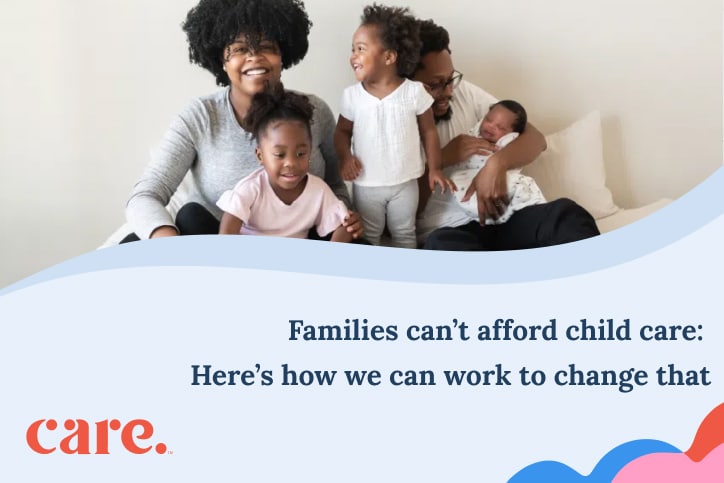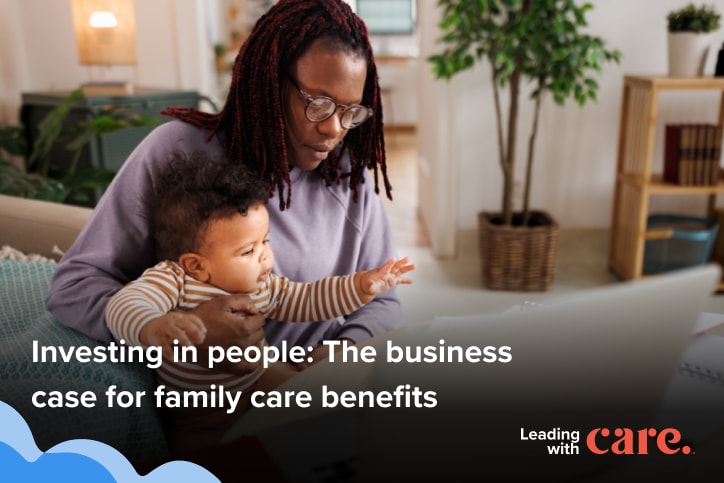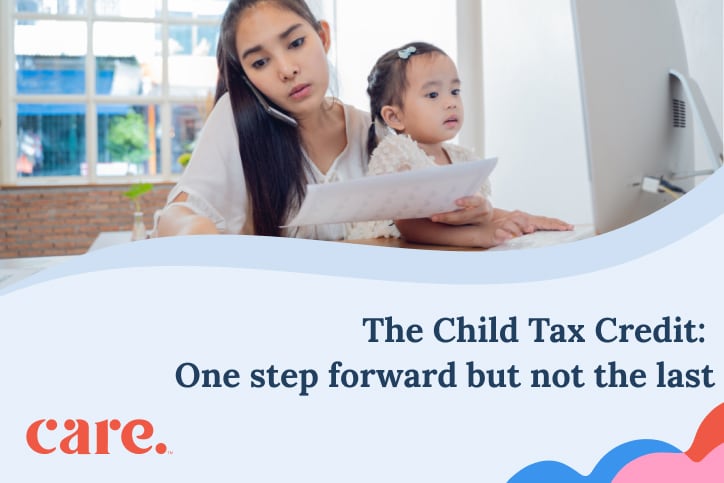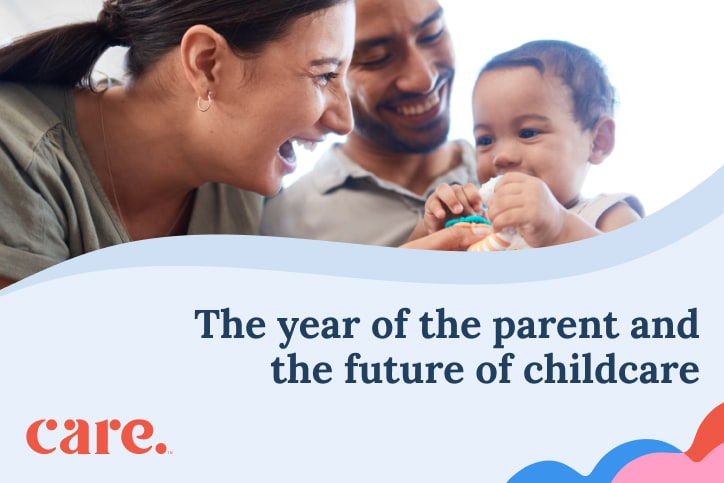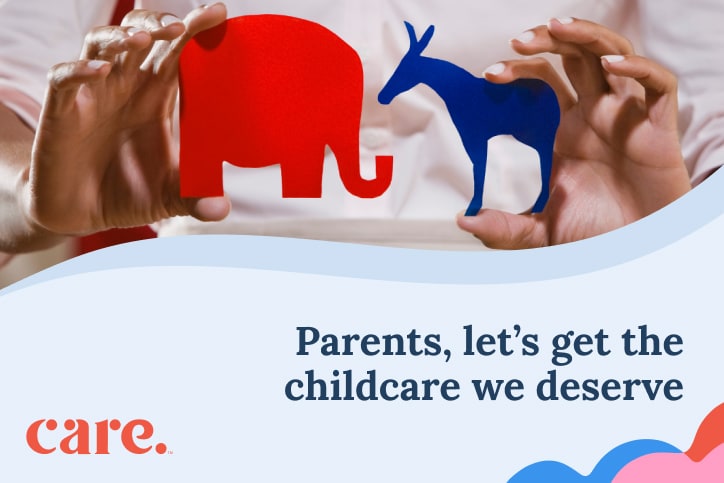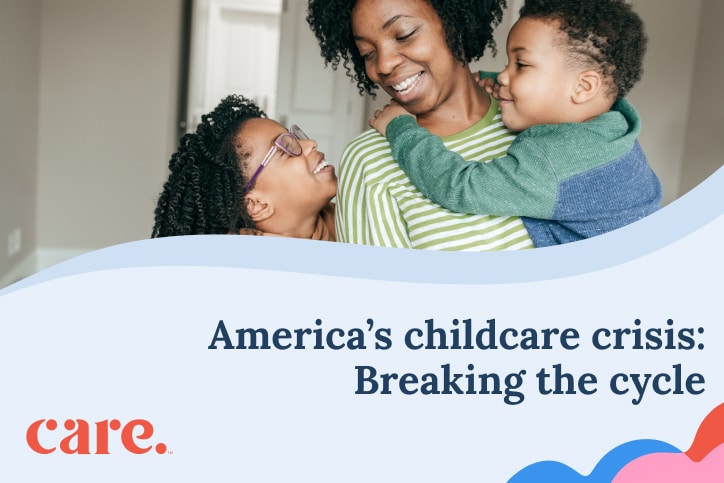I am so proud to share our 10th annual Care.com Cost of Care Report. Over the past decade, this has become a primary go-to source for child care costs in America. We have surveyed literally tens of thousands of parents about child care costs in the U.S. and how they impact their family’s finances and ability to work, thrive and succeed.
The 2023 Cost of Care Report provides the most thorough look at child care costs yet, including a current-, 5- and 10-year lookback. According to input from 3,000 families this year, it will come as no surprise when I tell you that an ongoing crisis continues in our country … and it’s getting progressively worse. The report reveals the growing impact and a decade-in-the-making story about the cost of child care, in which we must face a few unsettling facts:
- Fact #1: For the 10th year in a row, child care costs have continued to rise.
- Fact #2: Too many families in the U.S. continue to fall through “care gaps” due to the decreased affordability and accessibility for child care and an inadequate child care infrastructure nationwide.
- Fact #3: Child care is unaffordable for the majority of U.S. families, particularly low-income and middle-class households.
For too long, the lack of quality, affordable child care has been treated as a personal matter for each family to solve alone. But the reality is that care drives our economy, making it a very public matter, whether you have kids or not. Without quality, affordable child care, parents can’t afford to work — and this is disproportionately true for mothers and low-income families. At the same time, according to the U.S. Bureau of Labor Statistics, the child care workforce was 8% smaller in 2022 than it was in pre-pandemic 2019 while demand for care grows. At this rate, we face an estimated loss of almost $300 billion annually in gross domestic product (GDP) as soon as 2030, if we don’t fix our care infrastructure.
The facts sting. A decade of reporting and care remains inaffordable or inaccessible for many families across the country. Let’s take a look at where we are today and where we can go from here.
The cost of child care in 2023
According to the 2023 Cost of Care Report, families are spending, on average, 27% of their household income on child care expenses. And 59% of parents surveyed tell us they are planning to spend more than $18,000 per child on child care in 2023. Let that sink in — $18,000. Per year. On child care. That’s at least $1,500 a month, per child, so parents with young children can go to work.
Even more distressing, this isn’t an affluent family problem — 49% of families with an average household income between $50-75k, as well as 39% of families making under $50k per year, are reporting this $18,000+ a year child care price tag. And if that’s not worrisome, consider that 57% of single-parent households also plan to spend over $18,000 for child care this year even with just one eligible wage earner.
Rising child care costs and their effects on families
There are a number of factors that contribute to the rising cost of child care. Of course, cost is affected by typical market shifts in the child care industry, including changing economic conditions and consumer preferences. In addition, the dynamics of supply and demand come into play — which, both pre- and post-pandemic, have revealed a shortage of affordable, quality child care options. The steep cost of maintaining an existing child care facility, let alone opening a new one, can also drive down the wages of workers while driving up the cost of care for families.
Another huge factor? An inadequate child care infrastructure and the “care gaps” that continue to open up due to the displacement and discontinuity that comes without one.
Who specifically is affected by these “care gaps”?
- Families who fall victim to the “care cliff”: These are working families who still can’t afford child care because they make too much (even if it’s just $1 over their state’s median income) to qualify for subsidized care but not enough to cover the total cost of their child care needs out of pocket.
- Families who demand more flexibility and choice in their child care options, including:
- The 51% of families living in a “child care desert”¹ in pre-pandemic 2018, a number that has, no doubt, increased as a result of the almost 9,000 daycare closures during the height of the COVID pandemic.
- Families working shift or other nontraditional hours.
- Families caring for older relatives who prefer to age in place.
Now, let’s consider solutions for families
A strong, sustainable care infrastructure requires the combined efforts of families, employers and the government. It felt so promising to see President Biden recently sign an executive order on child care. To be clear, the need for care infrastructure is not a partisan matter. The inception of groups like the Bipartisan Pre-K and Child Care Caucus and, most recently, the Congressional Bipartisan Affordable Childcare Caucus indicate there’s also finally a consensus across the aisle that more needs to be done to make child care in America more affordable and accessible for families, as well as make it a viable career for caregivers. However, the best path forward remains up for debate.
One promising solution we believe can address these challenges for many families is optimizing smart, thoughtful and effective dependent care tax policy — including the Child and Dependent Care Tax Credit (CDCTC) and Dependent Care Assistance Programs (DCAPs), also referred to as dependent care flexible spending accounts (FSAs). Tax policies like these are often the only assistance available to many families.
There’s no question that temporary COVID-era changes to tax policy for 2021 reduced the cost of child and senior care and provided more choice for working families. However, the expiration of these changes not only exacerbated care gaps but reverted families back to 1986 pre-tax caps. Why? That’s because — another fun fact — since 1986, families have been able to put up to $5,000 of pre-tax income into FSAs, but this limit has not been changed for 35 years and is not indexed to inflation.
We believe it’s critical to enact change and reduce the financial impact on families by:
- Restoring enhancements to the CDCTC to pandemic levels in order to assist families more widely.
- Modernizing DCAPs policy to meet the economic realities of families today (not those of more than three decades ago when the average cost of gas was $0.86 per gallon).
- Reimagining the Employer-Provided Child Care Tax Credit to give employers more flexibility in supporting employees with care needs.
While this doesn’t solve every problem, it’s a sweeping start. Here’s how this tax policy solution could benefit many families:
- Addresses and remedies some of the most critical care gaps and gives families more pre-tax dollars to fund care that employ and pay care workers everywhere, including care deserts.
- Provides policymakers with a lower cost option to assist families with their care needs.
- Ensures that the private sector — and not just the government — is part of the solution for solving the national caregiving crisis.
- Alleviates pressures on an already strained long-term care industry.
Even better, this solution has bipartisan support among a majority of voters.2 The time to act is now.
Why Care continues to survey and report on the rising cost of child care
The first annual Care Cost of Care Report came out in 2013. Ten years ago. And the story for families continues to uncover a daunting bottom line. So you may be wondering, why does Care continue to do the research and talk to families about the cost of care and the effect on their families year after year?
The fact of the matter is we’re in the business of helping families with their care needs, and behind this research are real families who are being challenged. Those families are you and me, our employees, our members and our loved ones, and there are so many benefits to all of us when we help families. We’re in this for the long haul.
Consider this: Helping families benefits us all
Just a few of the benefits of investing in American families through affordable child care include:
- Reduction in income inequality and poverty rates.
- Long-term societal benefits and the importance of investing in early childhood education.
- Support for the child care workforce, in the form of fair wages and benefits.
Your story is our story. Your success is our success. And we promise to continue to do our part in closing the care gaps that exist by working in Washington, D.C. to address them and sharing the real stories of families affected in order to help do the hard work of building a comprehensive and sustainable child care system for families. Who’s with me?
1 Any census tract with more than 50 children under age 5 that contains either no child care providers or so few options that there are more than three times as many children as licensed child care slots).
2 These types of programs are popular among voters. A 2021 First Five Years Fund (FFYF) poll showed that 85% of voters — on both sides of the aisle — support making child care more affordable by providing parents with an enhanced CDCTC.
